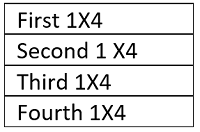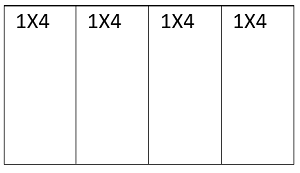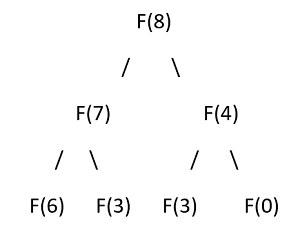Home »
Interview coding problems/challenges
Number of ways to construct the grid
Here, we are going to learn the solution to find the number of ways to construct the grid – which is a recursion problem featured in Amazon interview rounds.
Submitted by Radib Kar, on April 19, 2020
Problem statement
There is a grid with size NX4 and you have only one type of tiles to construct the grid. You can place either vertically or horizontally. You need to find, how many ways you can construct a grid of size N x 4 using the 1X4 tiles.
Input:
Input contains only one line with the value of N.
Output:
Print number of possible ways.
Constraints:
1 ≤ N ≤ 80
Example
Input:
1
Output:
1
Explanation:
So n=1 and grid is 1X4. That’s why only one way we can build
Input:
4
Output:
2
Explanation:
So, n=4 and grid is 4X4. That's why two way we can build
First way is to place all four tiles horizontally one after one
Like below,


Second way is to place all four tiles vertically one after one
Input:
5
Output:
3
Explanation:
So, n=5 and grid is 5X4. That's why two way we can build
First way is to place all five tiles horizontally one after one
Second way is, place four tiles vertically and place the last
tiles horizontally above them
Third way is, place the first tile horizontally and place other
four tiles vertically on that.
Solution Approach
The problem is recursive by nature and thus can be solved recursively.
Let,
f(n)=Total number of ways of constructing the grid
So, obviously f(n) would be
f(n)=f(n-1) +f(n-4) as we can either place last tile horizontally on the previous tiles or we can construct by vertically placing 4 1X4 blocks.
So let's say f(8)

So on...
So, there are so many overlapping sub-problems and that's why we need to store and use Dynamic programming.
So, if we convert it into a DP solution,
1) Declare dp[n+1] to store results for input n.
2) Initialize dp[0]=1,dp[1]=1,dp[2]=1,dp[3]=1;
3) for i=4 to n
dp[i]=dp[i-1]+dp[i-4];
4) Return dp[n];
So dp[n] is the final result.
C++ Implementation
#include <bits/stdc++.h>
using namespace std;
int main()
{
int n, item;
cout << "Enter value of n" << endl;
cin >> n;
long long int* dp = (long long int*)(malloc(sizeof(long long int) * (n + 1)));
dp[0] = 1;
dp[1] = 1;
dp[2] = 1;
dp[3] = 1;
for (int i = 4; i <= n; i++)
dp[i] = dp[i - 1] + dp[i - 4];
cout << "Number of ways to make the tile is: " << dp[n] << endl;
return 0;
}
Output
Enter value of n
5
Number of ways to make the tile is: 3
Advertisement
Advertisement